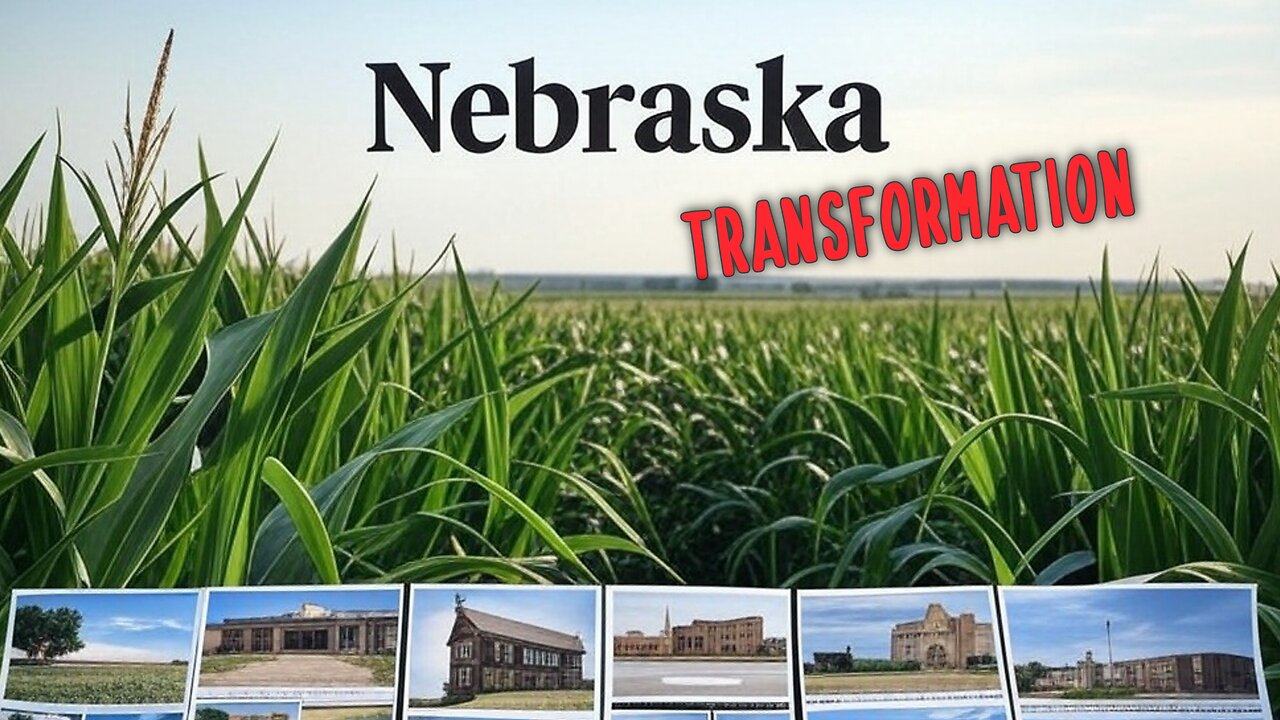Premium Only Content

The Start of Hispanic Migration (Part 1): Nebraska Transformation through Migration and Meatpacking
Hispanic roots in Nebraska stretch back centuries, beginning with Spanish explorers like Pedro de Villasur who ventured north in 1720. However, the meaningful migration that reshaped the state started later, in the mid-19th century. When Nebraska became a state in 1867, a small group—perhaps 50 to 100 Mexicans—worked railroads and cattle trails, vastly outnumbered by over 50,000 White settlers. These early arrivals laid a quiet foundation, but the real surge came in 1969 when Iowa Beef Packers opened its Dakota City plant. Facing a union strike, the company hired Mexican workers, many undocumented, under Governor Norbert Tiemann’s watch, establishing a reliance on cheap labor that set the stage for decades of growth.
This pattern took hold and spread rapidly. By 1990, Iowa Beef Packers launched another plant in Lexington, drawing hundreds more workers and transforming the town into a Hispanic hub within a decade. State leaders offered no resistance, allowing the population to climb from 6,000 in 1967 to over 94,000 by 2000. The pull of agriculture—meatpacking and crop production—drove this expansion, offering steady jobs at wages far below union standards. Across the nation, industries mirrored this approach, tapping into a growing pool of workers willing to take on grueling tasks for less pay, a trend that fueled demographic shifts from coast to coast.
Nebraska’s governors, from Tiemann to those in the late 20th century, stood by as this workforce grew, planting seeds for a broader overhaul. The state’s agricultural might, generating billions annually, became the magnet that pulled families north with promises of work and stability. This unchecked migration wasn’t just a local phenomenon—it reflected a national wave where economic needs reshaped entire regions, setting Nebraska on a path where Hispanics became a permanent fixture, altering its identity step by step.
50-Word Summary
Hispanic roots in Nebraska trace back to Spanish explorers like Pedro de Villasur in 1720, but significant migration began in 1867 with railroad workers. The 1969 Dakota City plant opening sparked a surge, fueled by meatpacking and agriculture. By 2000, Nebraska’s Hispanic population hit 94,000, reshaping the state. Read the full story at the Nebraska Journal Herald
Read the full article at the Nebraska Journal Herald
#HispanicNebraska #SpanishExplorers #MeatpackingMigration #NebraskaHistory #LaborLegacy
-
 1:53:37
1:53:37
The Quartering
5 hours agoWar Declared On ICE In Chicago, Massive Allegations Against Leftist Streamer Hasan, 600,000 Chinese
120K40 -
 2:04:04
2:04:04
DeVory Darkins
6 hours agoSchumer gets NIGHTMARE NEWS from Democrats
138K53 -
 8:41
8:41
ARFCOM News
5 hours ago $1.32 earnedWill It Dremel? New V-Series Glock Pics Leaked! + ATF Alters The Deal
4.28K3 -
 LIVE
LIVE
LFA TV
20 hours agoLIVE & BREAKING NEWS! | TUESDAY 11/11/25
1,128 watching -
 LIVE
LIVE
freecastle
6 hours agoTAKE UP YOUR CROSS- For the Lord is a GOD of justice; BLESSED are all those who wait for him!
122 watching -
 2:10:12
2:10:12
Side Scrollers Podcast
7 hours agoMAJOR Hasan Allegations + Arc Raiders Review CONTROVERSY + Craig TRENDS on X + More | Side Scrollers
44.5K7 -
 5:43
5:43
Buddy Brown
6 hours ago $6.03 earnedThere's a List of WEF's "Post Trump" Predictions GOING VIRAL! | Buddy Brown
32.5K17 -
 1:43:59
1:43:59
The HotSeat With Todd Spears
3 hours agoEP 207: Have YOU earned THEIR Sacrifice??
14.8K4 -
![[Ep 789] Republicans Turn “Clean CR” Into Hemp Ban | 50 Year Mortgage: Game Changer](https://1a-1791.com/video/fwe2/ce/s8/1/E/2/P/y/E2Pyz.0kob-small-Ep-789-Republicans-Turn-Cle.jpg) LIVE
LIVE
The Nunn Report - w/ Dan Nunn
3 hours ago[Ep 789] Republicans Turn “Clean CR” Into Hemp Ban | 50 Year Mortgage: Game Changer
65 watching -
 12:56
12:56
Benjamin Sahlstrom
9 hours ago $0.67 earnedTesla Powerwall 3 vs Anker SOLIX X1
10.2K